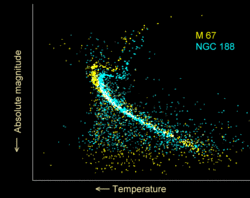
What is a star?
Stars are big balls of hot gas that changes its luminosity over a period of time. From Earth they are seen very small but actually they are huge. Stars are born in a giant cloud of dust and gas, they also change...sometimes they might shrink due to gravity , lower their luminosity and even explote.

Types of Stars
There are four type of starts which are White Dwarfs, Main Sequence Giants and Super Giants.
White Dwarfs are stars that already died. These stars are white and dim, meaning they don't have as much magnitude as other stars. They are small stars, their temperature is from 6,000 to 20,000 Kelvin.
 Main Sequence stars are blue stars. The majority of stars in the galaxy are main sequence stars including the Sun. These stars are from 11,000 to 25,000 Kelvin and the average luminosity is 20,000 except the Sun is 1.
Main Sequence stars are blue stars. The majority of stars in the galaxy are main sequence stars including the Sun. These stars are from 11,000 to 25,000 Kelvin and the average luminosity is 20,000 except the Sun is 1. Giant stars are red stars. Their temperature is from 3,000 to 7,000 Kelvin. Their luminosity is greater than 100 to 10,000.
Super Giants Stars are also red stars. They are huge stars of course. Their temperature is less than 10,000. Their magnitude is greater than 10,000.

 H-R Diagram There are varieties of stars in space, and each of them are classified into many categories. For example, the temperature inside the star determines the color of a star. Red stars' temperature are approximately 3,500 Kelvin.
H-R Diagram There are varieties of stars in space, and each of them are classified into many categories. For example, the temperature inside the star determines the color of a star. Red stars' temperature are approximately 3,500 Kelvin.This is a diagram that the scientists use in order to classify the stars.
Nuclear Fusion


